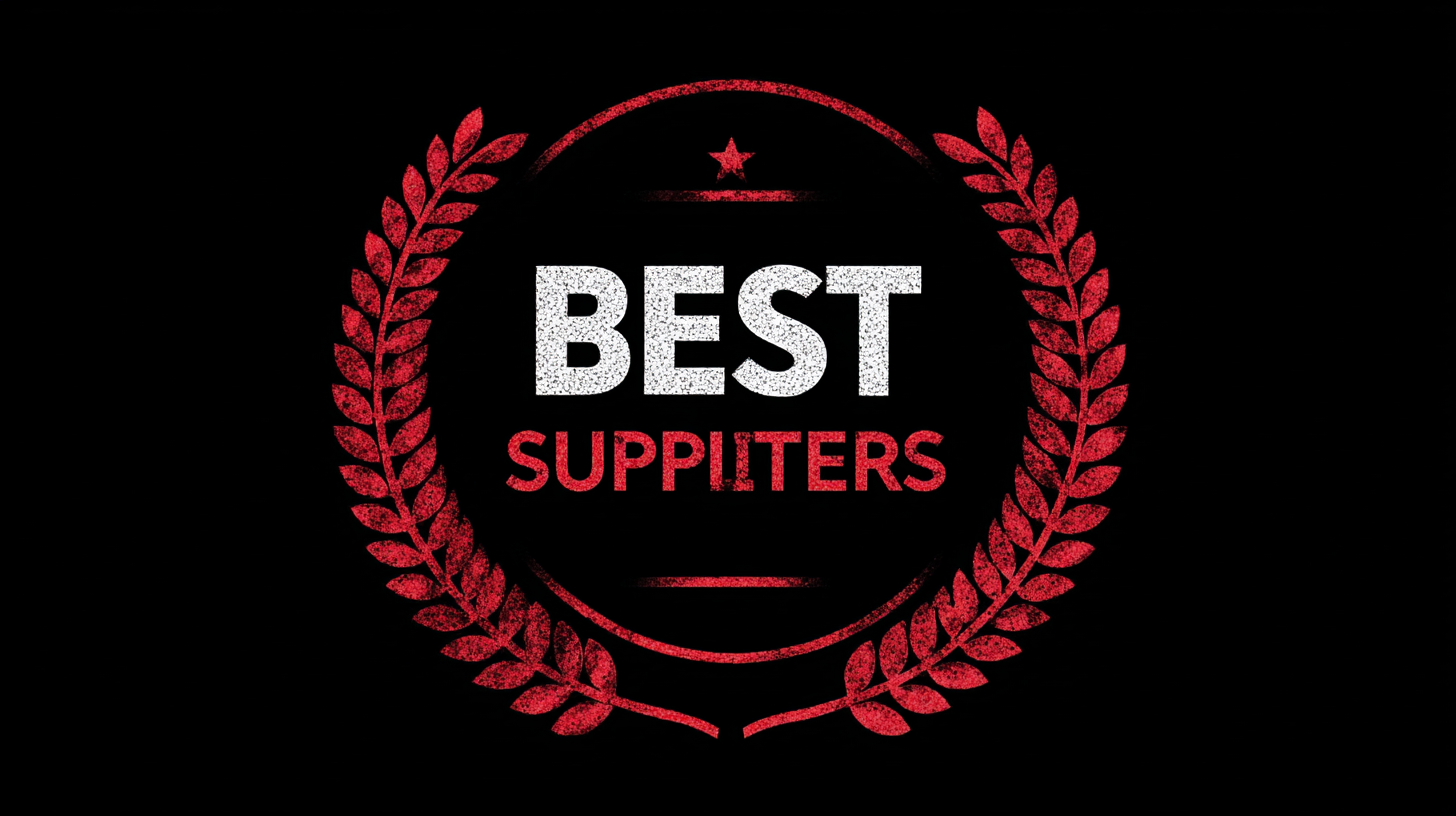

In an increasingly interconnected global market, the choice of suppliers has become a pivotal factor in determining business success. As we look toward the technological advancements expected to shape 2025, it’s crucial for global buyers to understand how to select and collaborate with the best suppliers to unlock their full potential. From leveraging artificial intelligence and automation to adopting sustainable practices, the latest trends can significantly impact supplier relationships and operational efficiency.

In this blog, we will explore practical applications of these technology trends, offering insights on how global buyers can effectively engage with suppliers to drive innovation and growth. Understanding these dynamics will not only enhance strategic partnerships but also ensure competitive advantage in a rapidly evolving landscape.
When navigating the complex landscape of global procurement, understanding product categories is paramount for buyers seeking to unlock success with the best suppliers. Each category comes with distinct characteristics that influence not only the selection process but also the negotiation dynamics. For instance, electronics, textiles, and raw materials each have unique supply chains, lead times, and market demands that dictate how buyers approach sourcing. Recognizing these features allows for more informed decisions, enabling buyers to align their procurement strategies with the specific requirements of each category.
Moreover, understanding the various uses of product categories can provide insights into market trends and potential growth areas. For example, sustainable products are gaining traction across multiple sectors as consumers and companies alike prioritize eco-friendly options. By identifying which categories are evolving and their subsequent needs, buyers can anticipate shifts in demand, tailor their strategies accordingly, and foster stronger relationships with suppliers.
This proactive approach not only enhances procurement efficiency but also positions buyers to leverage opportunities within their industries, ensuring long-term success in global markets.
Evaluating suppliers is a crucial step for global buyers aiming to ensure quality and reliability in their supply chains. The first step in this process is to define clear criteria for assessment. Factors such as product quality, pricing, delivery timelines, and customer service should all be prioritized based on the specific needs of the buyer's business. For example, a supplier providing critical components for a manufacturing process may be evaluated more rigorously than one supplying less mission-critical items. Creating a weighted scoring system can help in objectively comparing suppliers against these criteria.
Once the criteria are established, it's essential to gather data on potential suppliers through various methods. This can include reviewing online ratings, seeking recommendations from industry peers, and conducting site visits if feasible. Additionally, obtaining samples of products allows buyers to assess quality directly. Open communication with suppliers during this evaluation phase will also provide insights into their practices and priorities, further aiding in the decision-making process. By thoroughly assessing alternatives with these strategic steps, global buyers can unlock success and foster beneficial long-term partnerships with their suppliers.
| Supplier Category | Product Type | Region | Quality Rating | Lead Time (Days) | Price Range (USD) |
|---|---|---|---|---|---|
| Electronics | Smartphones | Asia | A+ | 30 | 200-800 |
| Apparels | Clothing | Europe | A | 45 | 100-500 |
| Home Goods | Furniture | North America | A- | 60 | 300-1500 |
| Automotive | Parts | Asia | B+ | 20 | 50-300 |
| Food | Processed | Latin America | A | 15 | 10-100 |
In today's rapidly evolving global market, businesses must adapt their sourcing strategies to engage effectively with diverse suppliers. The shift in consumer behavior, particularly in dynamic markets like China, emphasizes the need for buyers to reassess their supplier networks. Recent reports indicate that the demographic profile of consumers in China is changing, moving from a focus on emerging middle-class buyers to a broader range that includes those affected by economic fluctuations. This shift prompts global buyers to refine their supplier engagement strategies to tap into new consumer segments.
Furthermore, the implications of growing economic nationalism and the reallocation of supply chains necessitate a proactive approach to global sourcing. Reports suggest that firms that can successfully navigate these challenges are more likely to harness growth opportunities in emerging sectors. For example, demand in commercial aerospace sectors, including satellite communication and remote sensing, is projected to increase significantly, driven by advancements in technology and heightened national security concerns. Engaging with suppliers that are agile and innovative becomes crucial for buyers aiming to capitalize on these trends and maintain a competitive edge in their markets.
In today’s competitive landscape, successful supplier partnerships can significantly enhance operational efficiencies and spur growth. Real-world case studies reveal powerful examples of how global buyers have leveraged their supplier relationships to achieve outstanding results. For instance, a report by McKinsey highlights that optimizing supplier collaboration can lead to a 12% reduction in costs and a 20% improvement in product quality. Clearly, the impact of strategic supplier alliances is far-reaching.
To maximize the benefits of these partnerships, companies can follow a few essential tips. First, develop open communication channels with suppliers, fostering transparency and trust. This can lead to innovative solutions that benefit both parties. Additionally, investing in long-term relationships instead of transactional interactions can result in better alignment of goals and strategies. For example, a case study from Supply Chain Management Review illustrates how a leading automotive firm successfully cut lead times by 30% through collaborative planning with its key suppliers.
Lastly, regularly assess supplier performance and provide constructive feedback. This ongoing evaluation not only strengthens the partnership but also drives continuous improvement. According to a Deloitte report, businesses that actively manage supplier relationships are 25% more likely to achieve their strategic objectives. Embracing these practices helps global buyers unlock potential and drive meaningful change within their supply chains.

In today's rapidly evolving market landscape, adapting to changing supplier relationships is crucial for global buyers. As we navigate the shifts in demand and sustainability trends, businesses must embrace innovative approaches to partner with suppliers who align with their long-term goals. The expected growth of the chemical distribution market at a compound annual growth rate of 6.71% from 2024 to 2031 signals not only opportunity but also the rising importance of sustainable practices. Companies are finding that embracing green initiatives can enhance brand loyalty and market positioning, essential for thriving in this competitive environment.

Moreover, industries such as the automotive sector are witnessing unprecedented transformations as they adapt to electric vehicle demands and automation. Companies are urged to rethink their supply chain strategies and invest in digital solutions that provide visibility and agility amidst geopolitical uncertainties. The emphasis on optimizing product innovation and experiential enhancements in supermarkets showcases a broader trend towards operational excellence, enabling organizations to respond swiftly to market fluctuations. By fostering resilient supplier partnerships, global buyers can unlock significant success in an interconnected, dynamic marketplace.